 |
 |
 |
| |
A Structural Basis for Resistance to PL-100, a New (unboosted) Protease Inhibitor for PI Resistance
|
| |
| |
Reported by Jules Levin
16th Intl HIV Drug Resistance Workshop
June 12-16, 2007, Barbados
J. P. Vacca1, M. K. Holloway1, T. J. Allison1, C. A. Coburn1, J. J. Wu2 and M. A. Wainberg3
1Merck Research Laboratories, 2Ambrilia Biopharma Inc. and 3McGill University, Montreal, Canada
AUTHOR CONCLUSIONS
PL-100 is a potent compound with a low propensity for resistance
It takes six months of passaging experiments to raise a moderate level of resistance
A model in the WT and mutant enzyme suggests that the diphenyl alanine is primarily responsible for the lower activity due to the P81S mutation
An X-ray structure of PL-100 with WT protease confirms the modeling experiment
ABSTRACT
BACKGROUND: PL-100 is a novel HIV-1 protease inhibitor (PI) with a favorable cross-resistance profile that was discovered at Ambrilia Biopharma and was recently licensed to Merck & Co., Inc. for development. Its phosphorylated pro-drug PPL-100 is currently in Phase I human clinical trials. Serial passage of the compound in mononuclear cells infected with a laboratory-adapted HIV-1 strain resulted in the eventual isolation of several viral mutants containing substitutions in a novel region of the active site. Modeling studies in the wild type active site and in mutant variants suggest a structural basis for the modest loss in activity.
METHODS: It has been previously reported that, after 48 weeks of passaging under increasing selective pressure of PL-100, we observed a novel pattern of mutations (K45R, M46I, T80I, and P81S) in the PR gene. T80I was observed at week 8. All other mutations did not appear until week 25. No further mutations were observed up to 48 weeks. While K45R and M46I are known mutations in the flap region, T80I and P81S are novel mutations in the substrate cleft. In order to understand this novel resistance profile, a model of PL-100 was created in the active site of the wild type protease. Modeling of the C-terminal segment was guided by comparison to the crystal structure of amprenavir, while the N-terminal segment was generated based on conformational search and energy minimization. The T80I and/or P81S mutations were then incorporated into the WT crystal structure and the bound pose for PL-100 was reexamined in the mutant enzyme models. Subsequently, an X-ray structure of PL-100 was obtained in the wild type protease which confirmed the initial modeling study.
RESULTS: In the model of PL-100 in the WT active site, the transition state hydroxyl group interacts with the catalytic aspartates, D25A and D25B. The 4-aminophenyl sulfonamide fills the S2' pocket and the isobutyl group occupies the S1' pocket in a manner similar to amprenavir. The lysine backbone extends through the active site cleft and positions the diphenyl-alanine amide moiety in the S3-S4 region. The two diphenyl groups fill the P3 and P1 sites and are arrayed on either side of P81. Mutation of this group to a serine would change the shape and character of the active site in this region, possibly creating an unfavorable hydrophilic/hydrophobic clash with the adjacent phenyl groups of PL-100.
CONCLUSION: The mutational profile of PL-100 can be deduced from a model and subsequent X-ray crystal structure of the inhibitor bound to HIV-1 protease. This information can aid in the design of novel inhibitors.
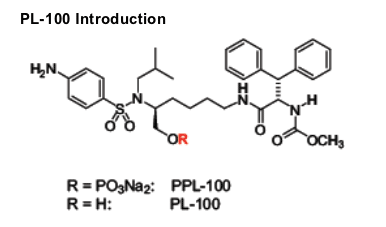
--A novel lysine-based scaffold for HIV protease inhibition discovered by Ambrilia Biopharma and licensed to Merck
--Reversible inhibitor of HIV protease Ki = 36 pM
--Protein adjusted EC90 for WT protease = 90 nM
--For resistant virus = 140 nM
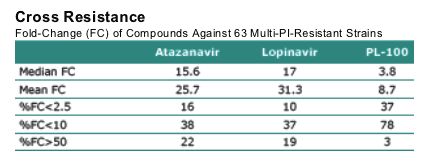
PL-100 displays favorable cross-resistance profile in comparison to current marketed PIs
PL-100 has the potential for significant clinical efficacy in treatment-experienced patients or patients newly infected with drug-resistant strains
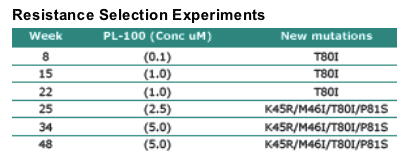
Drug concentration increments during selection and genotyping of HIV/IIIB variants isolated from CBMCs in the presence of PL-100
It takes time to raise significant resistance to PL-100
Wainberg, Wu et al 2006 Resistance Workshop
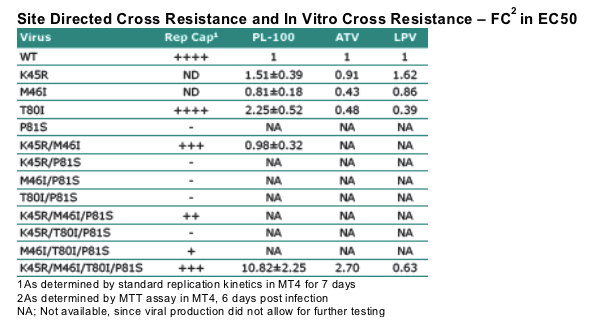
Single mutations confer a low level of resistance (about 2.5FC)
A moderate resistance (10FC) is conferred in the presence of four mutations
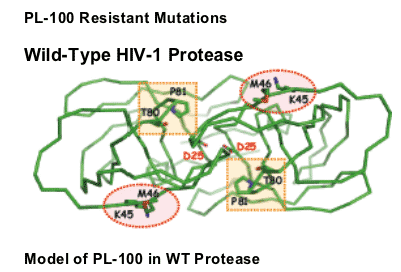
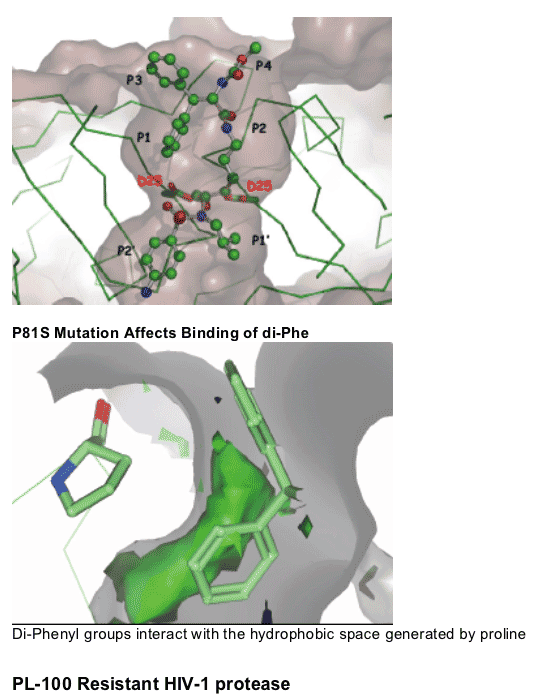
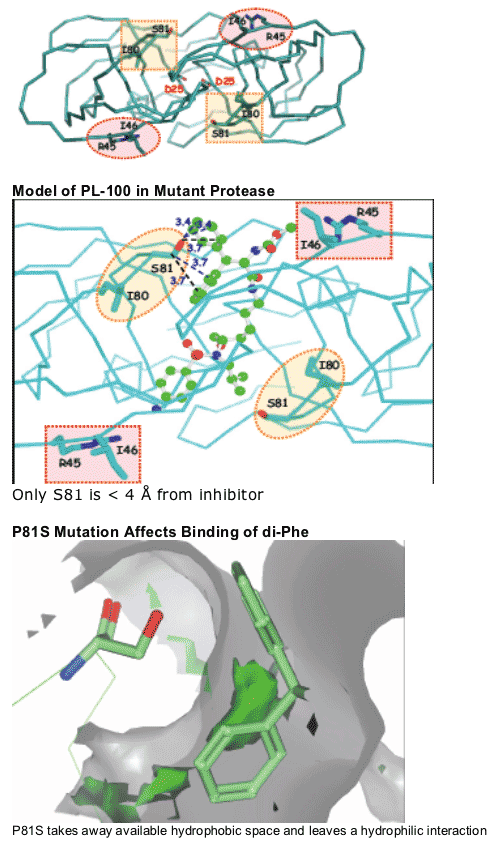
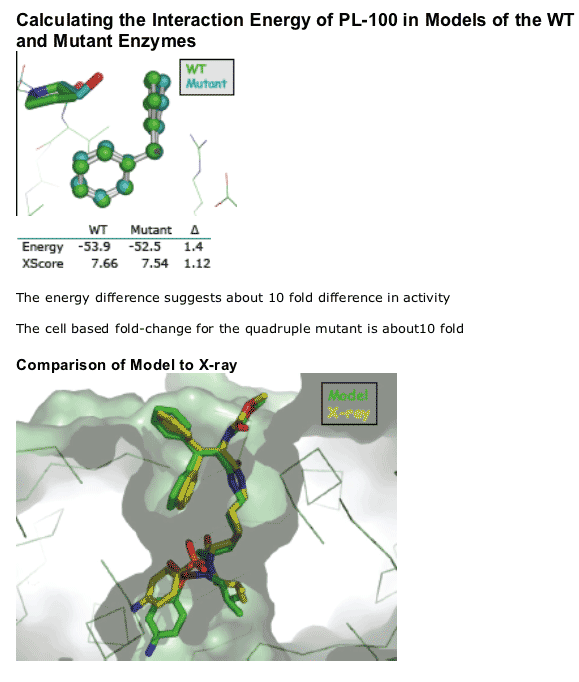
|
| |
|
 |
 |
|
|